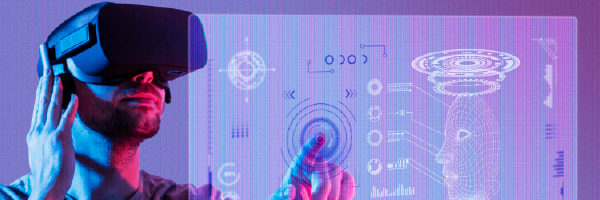
Augmented Reality (AR), fueled by the advent of 5G networks, is poised to revolutionize telecommunications and redefine how we interact with our surroundings. AR Enhances Real-World Visualization with 3D Displays. 5G brings ultra-low latency and high bandwidth, making it an ideal match for AR. The ability to bring large amounts of data near instantaneously to the user for AR enables new solutions for training, safety, inspection, and countless other potential use case adoptions.
One compelling use case is the display of 3D CAD/BIM models in construction sites, first responders, and real estate. Engineers and architects can visualize their designs in real-world context before breaking ground, potentially saving millions in cost efficiencies. Imagine a worker wearing AR smart glasses who can see pipelines, structural elements, and equipment overlaid in the physical environment. Telecom field service technicians can connect to remote experts in real time, eliminating the need for senior experts to be physically present at the site. In healthcare, doctors can overlay millimeter-precise 3D virtual instructions onto a patient's body during surgery. This hands-free approach enhances efficiency in the operating room and other critical areas.
Geotagged AR Experiences with Unparalleled Precision unlocked from 5G connectivity. SLAM (Simultaneous Localization and Mapping) algorithms empower us to construct a 3D map of the natural world with exceptional precision. By amalgamating sensor data from cameras and other sensors, AR devices can seamlessly comprehend their surroundings and position virtual objects. With unmatched accuracy, we can geotag points of interest anywhere—historical landmarks, hidden gems, or personalized notes. This geospatial precision opens up a world of possibilities for location-based AR experiences. Tourists can navigate cities with interactive guides, and urban planners can visualize infrastructure changes before implementation.
Augmented reality's primary purposes focus on real-world use cases compared with entertainment-focused Virtual Reality (VR). Unlike virtual reality, which immerses users in entirely synthetic environments, AR overlays digital content onto the real world. This real-world focus aligns perfectly with 5G capabilities. AR enhances everyday experiences by providing context-aware information. Imagine restaurant recommendations popping up as you walk down a street or historical facts appearing when you visit a museum. 5G's low latency ensures that AR interactions feel seamless—no lag, no usability issues. The future of AR is bright, and 5G is the catalyst that will make it an integral part of our daily lives.